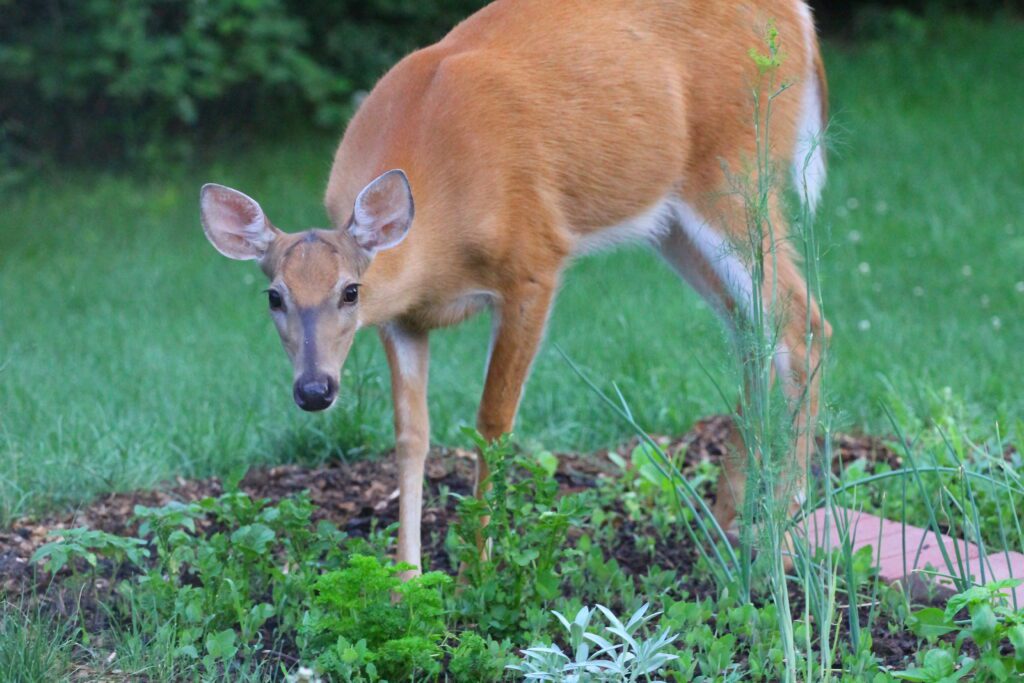Brought to you by The Wireless Deer Fence®
Living deer barriers called hedgerows have been used for centuries for deer control as a fence that never needs repair.
Living deer barriers are esthetically pleasing and natural and have many advantages over steel wire and post fences. However it often takes a long time for the barrier to be thick enough and strong enough to repel deer. A living deer fence will often work better than expected simply because deer will usually take the path of least resistance. Caution is required because many of the plants that make a good living deer barrier are fast growing and invasive.
A very pleasant living deer fence that is immediately impenetrable is a chain link or other type of fencing covered with blackberry bush or any variety of plants. The plants growing through the fencing blocks the deer’s view of their landing area, and the fencing confuses the deer if they try to come through. Sunflowers, thorny gooseberries, or Jerusalem artichokes can be used to change a fence into a living deer barrier.
In some areas the globe artichoke can be grown into an impressive deer barrier but can be a pest as they spread.
The Papago Indians in southwest US and Mexico have traditionally grown living deer barriers to protect their fields from cattle and deer by weaving together the branches of the thorny, cactus-like ocotillo plants.
Sagebrush and Russian olive are usually not eaten by deer and can be grown as living deer barriers to divert deer.
Living deer fence can be grown using Osage orange, also variously known as horse apple, hedge apple, or bois D’arc. This tree has been used for many years as a deer and livestock barrier. Armed with heavy thorns and properly planted and trained it grows into an impenetrable barrier.
Protect Your Yard and Garden
While growing a living deer barrier, you will need to protect your yard, garden, and young living deer fence. The Wireless Deer Fence® is guaranteed to control deer damage, effectively and humanely. And it doesn’t detract from the beauty of your yard.
Willow can be woven into a living deer fence but the fence has to be well protected until the plants are established because deer love the tender shoots of young willow. When they are woven together the willow branches graft onto each other to form a very strong deer barrier.
Fast-growing trees can be planted in a row and the tops cut off at seven feet to cause the trees to bush. The tops and subsequent pruning are woven between the living fence posts to create a living deer barrier called wattle fencing.
Species of honeysuckle, wild roses and climbing roses can be grown into an impressive living deer barrier.
Fruit trees like wild plum make a great deer barrier because they grow suckers rapidly.
Your fence posts really do the trick. I’m very satisfied with the results overall!
San Jose, CA


